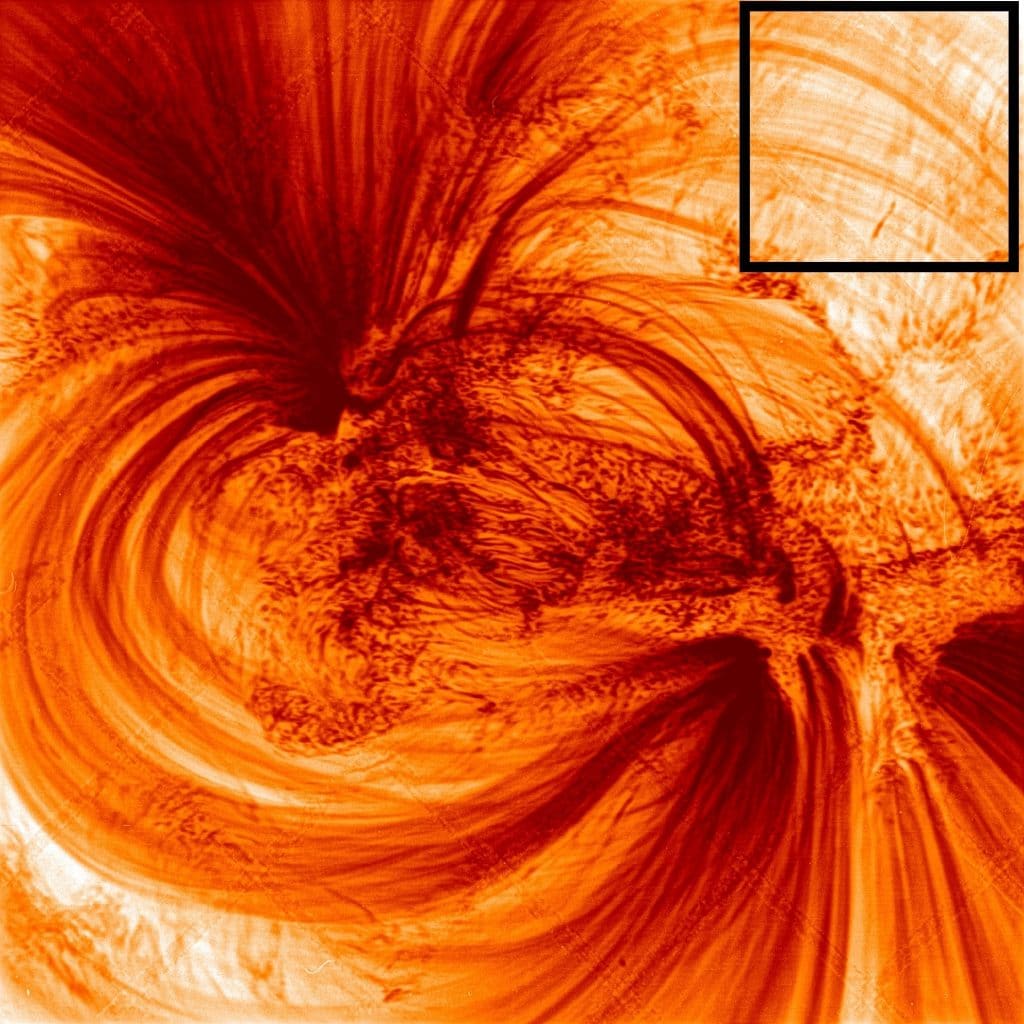
The images show off some impressive details.
Following last month’s illuminating high-quality images of Mars, courtesy of NASA, British researchers from the University of Central Lancashire have unveiled the highest resolution images of The Sun ever taken, and they’re mesmerising, to say the least.
What’s actually a deadly ball of pure fire looks like a close-up of a ridiculously expensive abstract painting, with the images revealing super-fine magnetic threads – which are filled with electrified gasses and million-degree plasma. Definitely a star I do not wanna get too close to.

The images were taken by NASA’s super techy Hi-C camera, a rocket-bourne imager which set off on its first-ever mission to study the sun back in 2012. The sub-orbital telescope has previously taken images of the sun, however, relaunched with an improved camera back in 2018 to continue its mission.

Researchers at UCLan have been studying the new images, alongside collaborators from NASA’s Marshall Space Flight Centre, to further understand the star’s hot strands, and how the eruption of solar flares and solar storms could affect life for humans on Earth.
Speaking of the images, Professor Robert Walsh, professor of solar physics at UCLan and institutional lead for the Hi-C team has said:
“Until now solar astronomers have effectively been viewing our closest star in ‘standard definition’, whereas the exceptional quality of the data provided by the Hi-C telescope allows us to survey a patch of the Sun in ‘ultra-high definition’ for the first time.”

With Dr Tom Williams, a postdoctoral researcher at UCLan who worked on the Hi-C data adding:
“This is a fascinating discovery that could better inform our understanding of the flow of energy through the layers of the Sun and eventually down to Earth itself. This is so important if we are to model and predict the behaviour of our life-giving star.”
The research has been published in the Astrophysical Journal, with researchers now preparing to re-launch the Hi-C to gather further data on the fascinating star.
[Featured image: UCLAN]

